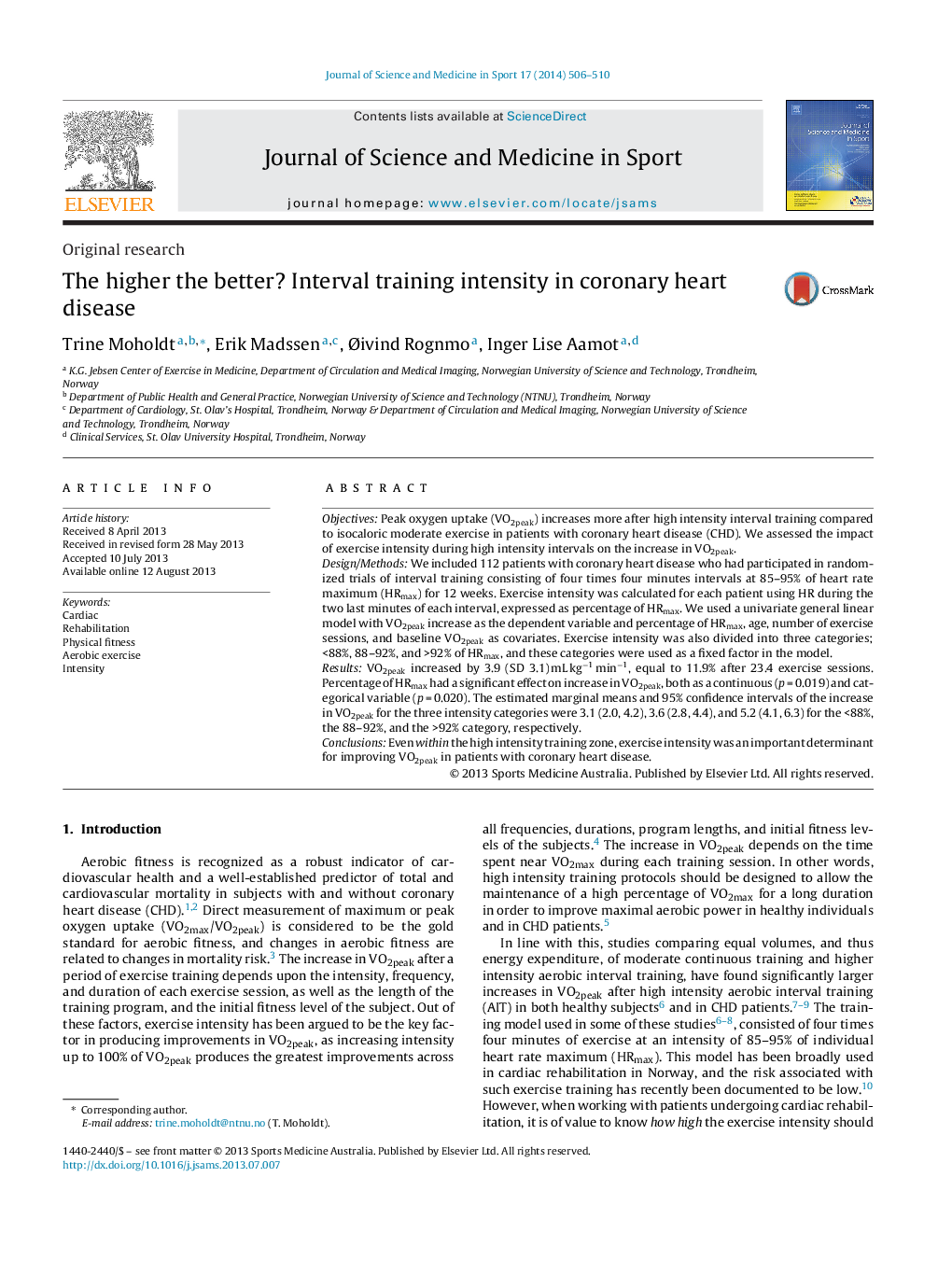| Article ID | Journal | Published Year | Pages | File Type |
|---|---|---|---|---|
| 2704457 | Journal of Science and Medicine in Sport | 2014 | 5 Pages |
ObjectivesPeak oxygen uptake (VO2peak) increases more after high intensity interval training compared to isocaloric moderate exercise in patients with coronary heart disease (CHD). We assessed the impact of exercise intensity during high intensity intervals on the increase in VO2peak.Design/MethodsWe included 112 patients with coronary heart disease who had participated in randomized trials of interval training consisting of four times four minutes intervals at 85–95% of heart rate maximum (HRmax) for 12 weeks. Exercise intensity was calculated for each patient using HR during the two last minutes of each interval, expressed as percentage of HRmax. We used a univariate general linear model with VO2peak increase as the dependent variable and percentage of HRmax, age, number of exercise sessions, and baseline VO2peak as covariates. Exercise intensity was also divided into three categories; <88%, 88–92%, and >92% of HRmax, and these categories were used as a fixed factor in the model.ResultsVO2peak increased by 3.9 (SD 3.1) mL kg−1 min−1, equal to 11.9% after 23.4 exercise sessions. Percentage of HRmax had a significant effect on increase in VO2peak, both as a continuous (p = 0.019) and categorical variable (p = 0.020). The estimated marginal means and 95% confidence intervals of the increase in VO2peak for the three intensity categories were 3.1 (2.0, 4.2), 3.6 (2.8, 4.4), and 5.2 (4.1, 6.3) for the <88%, the 88–92%, and the >92% category, respectively.ConclusionsEven within the high intensity training zone, exercise intensity was an important determinant for improving VO2peak in patients with coronary heart disease.
